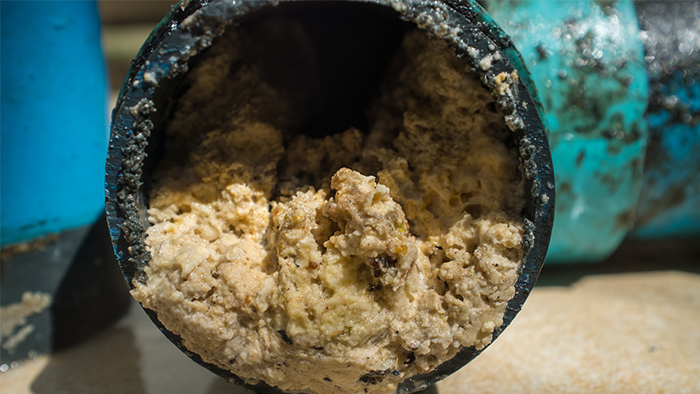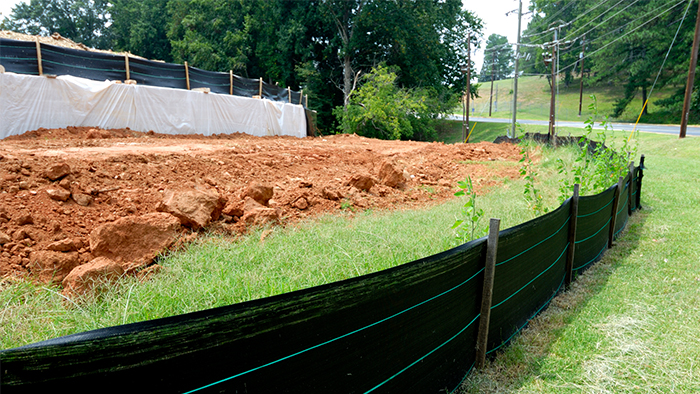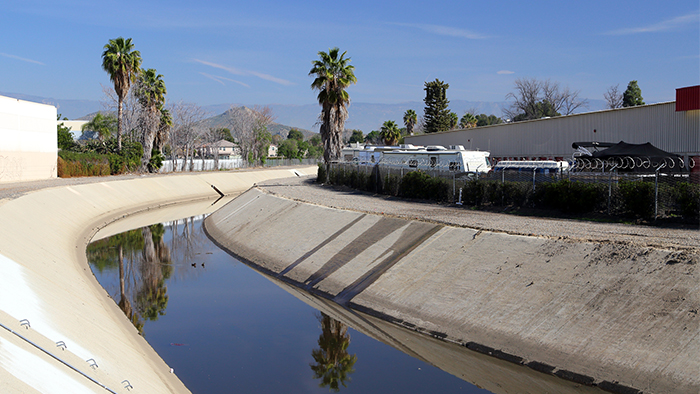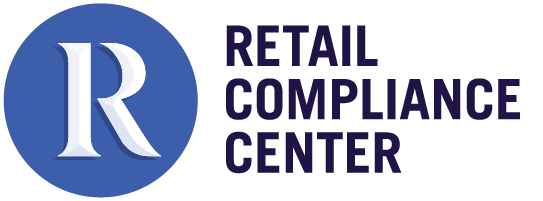Water Regulations
This area covers environmental regulations related to water that may affect retailers. This includes water use inside of a retail facility and outdoor water issues. Inside a facility, regulations cover drinking water, disposal down drains and water conservation. Outside issues are primarily related to stormwater runoff and storm drain management, as well as some conservation issues.
COMPLIANCE CONSIDERATIONS
The Clean Water Act (CWA) is the main federal law in the United States that addresses water pollution. Under the CWA, the National Pollutant Discharge Elimination System (NPDES) permit program grants federal permits to operations that discharge to the waters of the United States, which can include stormwater runoff. Drinking water is regulated under the Safe Drinking Water Act (SDWA).
Well Water
EPA generally does not regulate private wells used for drinking water unless the well is classified as a public water system, meaning that it has at least 15 service connections or serves an average of at least 25 people for at least 60 days a year. If the private well is classified as a public water system, then the owner must meet the SDWA standards for testing and treatment, as well as any state or local standards, which may be more stringent. Private wells not regulated at the federal level may still be subject to state and local standards.
Drain Disposal of Waste
Under the CWA pretreatment regulations, discharges that might interfere with or pass through the local Publicly Owned Treatment Works (POTW) or wastewater treatment plant, along with discharges of certain specified pollutants, are prohibited. Most local POTWs and sewer systems also are required to establish local limits, subject to EPA or state approval, on pollutants in order to protect their facilities from interference and to prevent the pass through of pollutants in violation of the POTW's NPDES permit. Any material poured down a drain waste must comply with these limits and, depending on the material, a permit may be required. The EPA has more information on the national pretreatment program.
Generally, drain disposal of waste should be minimized and hazardous waste, corrosive chemicals, grease, oil, paints, solids, or sludge should not be disposed of down the drain.
Localities and POTWs also have authority under state law independent of the CWA to establish terms of service, and these terms (often in an ordinance) can include environmental requirements.
Some retail facilities are connected to onsite wastewater treatment systems or septic systems, which are regulated by state and local governments. EPA provides guidance and technical assistance with their SepticSmart program. Septic tanks are not designed for the disposal of hazardous wastes, corrosive chemicals, paints, and grease or oils.
Fats, Oils, and Grease (FOG)
An important issue for stores with meat cutting departments and food service is the handling of fats, oils, and grease (FOG). FOG can cause sewer blockages, sewage spills, and backups. While regulated under the federal CWA, in practice the discharge of FOG is usually regulated on a municipal level. The New England Interstate Water Pollution Control Commission has resources on FOG Control and Management.
Any food service facility that introduces grease or oil discharges from kitchens, dishwashing, and any wastewater associated with food preparation to the sewer system should have a grease trap or larger grease interceptor to capture grease and solids. These devices are required by most state plumbing codes for food preparation areas, rotisserie cookers, and meat cutting departments.
Grease traps must be maintained and cleaned periodically in order to operate efficiently. When FOG buildup in the grease trap is 25% or more of the trap's capacity, it should be cleaned out. Many local municipal or sewer utility ordinances require pre-treatment permits or registration of grease traps and interceptors, as well as regular monitoring, cleanout, and often annual or quarterly reporting on those activities.
Grease can be recycled. The "yellow grease" from fryers is used to create products such as soaps, cosmetics, and animal feed, or can be converted into bio-diesel. The "brown grease" from grease traps can be used in making paints and polymers, or as a fuel. Sustainable Foodservice.com has more information on best practices for FOG.
Oil-Water Separators
Construction Stormwater Management
Retailers with robust new store and remodeling programs have been treated as regulated parties under stormwater rules by the EPA and some state agencies, and have been subject to enforcement in some cases for the poor stormwater and erosion control practices of their developers and building contractors. Relying solely on the expertise and compliance of your developers and contractors may offer little protection from such enforcement. Some national retailers have gone so far as to conduct their own inspections of their construction sites (often with third-party assistance) to ensure compliance by contractors and developers. 
During construction activities, site owners, builders, and developers are required to control erosion caused by the disturbance of the land and by their equipment and activities. Because of the significant environmental impact of sediment and erosion, all construction sites are subject to some type of stormwater requirements, which vary based on the size of the site and jurisdiction. Construction disturbing one acre or more commonly requires an NPDES permit under the CWA (usually issued by a state agency), and smaller disturbances, as little as 1/10 acre and even parking lot repavement, can trigger local requirements. It is important to check the state and local regulations well before breaking ground and to plan for the time needed for permit application and approval.
In the regulatory jargon of stormwater, the application for a state construction permit is referred to as a Notice of Intent or NOI. Often this must be accompanied by a construction Stormwater Pollution Prevention Plan (SWPPP), including an erosion control plan and any required post-development stormwater management plan. Post-development stormwater management is discussed below in the next section. A construction stormwater permit is closed out by submitting a Notice of Termination or NOT, by which the permit holder certifies that earth disturbing activities have been completed and the site has been stabilized, that the permit holder has transferred all areas under its control to another operator who has obtained construction stormwater permit coverage, or that the permittee has obtained stormwater coverage under a different permit for the same discharges. The EPA provides guidance on stormwater discharges for construction activities.
Stormwater Management (Post-Construction)
Stormwater runoff in areas with impervious surfaces such as paved streets, parking lots, and building rooftops (often called nonpoint source pollution) flows faster and at a higher volume than on unpaved and vegetated areas, and picks up more debris, chemicals, sediment, or other pollutants. This contaminated runoff adversely affects water quality, destroys habitat, damages infrastructure, and in areas with combined sewer systems, causes sewer overflows. The faster flow and higher volume of runoff from new developments can also add up to collectively cause an increase in major flooding downstream.
Once a permit holder files the NOT for its construction stormwater permit, post-construction requirements may kick in. These requirements can range from nothing, to local requirements for cleaning parking lots and catch basins, to the owner/operator's commitment to follow a stormwater management plan, or, in still relatively rare cases, to the requirement to obtain an NPDES permit and comply with a formal operating SWPPP.
While it may be called different things in different jurisdictions and under different regulations, a post-development stormwater management plan governs how a site owner/operator manages stormwater with Best Management Practices (BMP) to reduce and slow the flow of stormwater and encourage absorption into the ground. Examples may include:
- Structures for stormwater conveyance and treatment, site grading, ditches, catch basins, storm sewers, retention ponds, and green infrastructure such as permeable pavers, underground galleries, and vegetated swales, strips and buffers;
- Regular maintenance, such as lot sweeping, clean out of catch basins, and retention/detention ponds;
- Prohibitions on outdoor activities (for example, pressure washing of carts or fueling of trucks) and storage of materials that could pollute stormwater;
- Sampling after storm events (typically at industrial sites); and
- Reporting on maintenance and performance of stormwater BMPs.
EPA provides guidance on BMPs for stormwater post-construction.
Permit requirements may include inspection of stormwater control measures and discharges, recordkeeping, and stormwater pollution prevention plans. The EPA's NPDES Stormwater Program under the CWA authorizes many states to implement their own permitting programs. EPA provides a summary of state post-construction stormwater standards. The summary was last updated in 2016, and you should confirm the requirements in your state.
Warehouse and distribution centers may qualify as industrial facilities and be subject to NPDES permitting for stormwater discharges during normal operations. The need for a permit depends, in part, on the potential stormwater exposure of activities such as product or waste storage, truck fueling, vehicle maintenance, and outside storage of salt and sand for snow and ice control. Where an NPDES permit would otherwise be required, facilities may be excused from permitting if they can certify that industrial activities and materials (such as salt and sand, scrap metal, uncovered solid waste dumpsters, and excess racking and other unused industrial equipment) are not exposed to stormwater. The regulations differ by state. This is a relatively complex area, and many such facilities depend on environmental consultants and counsel to help them determine the need for a permit.
Cities are regulated under the EPA's Municipal Separate Storm Sewer System (MS4) program, and this drives the municipalities to implement local stormwater regulations in order to meet their permit requirements. Thus at the local level, facilities with impervious surfaces may be charged a fee to fund a Stormwater Utility, which the municipality uses to improve stormwater management and meet its MS4 permit. MS4 cities may also adopt regulations pursuant to their discharge permits that require contributors to the city's MS4 to manage or limit the flow of stormwater into the system in various ways, including, in some cases, the retrofitting of existing sites.
Managing ongoing stormwater compliance obligations at stores can pose significant challenges for retail, and every site can be different because of state and local regulations. Common stormwater considerations for retail are:
- Repaving or doing construction at a retail site may trigger new local stormwater requirements.
- Lease terms vary on whether the retailer or the landlord is responsible for the parking lot and stormwater structure maintenance.
- Conditions of entitlement and re-zoning. Your developer may have agreed to stricter stormwater best management practices, and your operations and facilities management teams need to be aware of any additional obligations.
- Jigsaw boundaries between local municipalities and utilities could cause your facility to be regulated by more than one local entity.
- Wastewater from pressure washing of exteriors and shopping carts should be kept out of stormwater drains.
- Maintenance and cleaning of parking lots, catch basins, or other stormwater conveyance and treatment structures, and retention/detention ponds needs to be conducted as required by local regulations.
Wetlands
Under the CWA Section 404, the U.S. Army Corps of Engineers is responsible for granting permits for construction projects that affect wetlands. Under Section 401, the EPA or a state program with authority from EPA can stop a construction project with a negative impact on water quality. The Construction Industry Compliance Assistance website has information on wetlands regulations and permits.
Conservation
Water conservation is an increasingly important issue and is regulated in some jurisdictions, such as California. Most requirements are at state or local levels, with restrictions typically but not always associated with drier geographic regions. Saving water also reduces operational costs. There are a number of ways retail facilities can reduce the use of water: use of low-flow plumbing fixtures in bathrooms and kitchens, fixing leaking equipment, and reducing landscaping water use.
SUSTAINABILITY AND REDUCING COMPLIANCE RISK
Reducing stormwater runoff at retail facilities can have a huge positive impact on the environment. Low Impact Development (LID) is an approach to land development or redevelopment designed to manage stormwater in a natural way. EPA provides information on green infrastructure design and implementation that can benefit water resources and the community. In some areas, facilities that implement stormwater management approaches get credit from stormwater fees.
Water conservation outside the facility can be done through water-smart landscaping and only irrigating in early morning or late evening to reduce evaporation. Rainwater collection systems are another way to reduce water use and stormwater at the same time. The American Rainwater Catchment Systems Association (ARCSA) provides information on state regulations on rainwater harvesting.
LEED for Retail
The US Green Building Council introduced the Leadership in Energy & Environmental Design (LEED) 2009 for Retail: New Construction and Major Renovations, which covers water use and stormwater runoff.
Related Content
Hazardous Waste Variations by State Matrix
Overview of state variations in hazardous waste regulations under RCRA, including hazardous waste characteristics, thresholds, and universal waste.
Spill Reporting Matrix
Summary of state requirements for reporting spills of oil or hazardous substances, including reporting quantity and contact information.
Tags
-
Water



